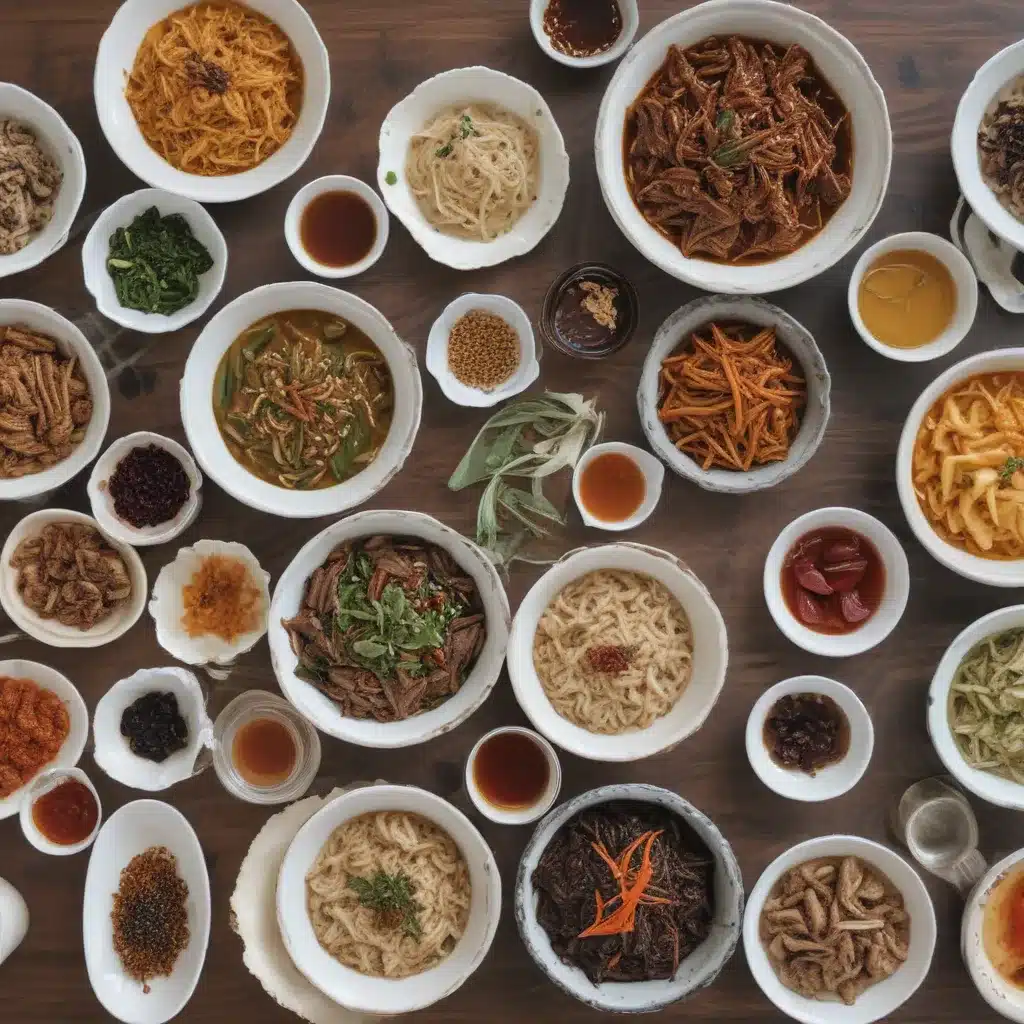
Discovering the Delightful Intersection of Korean and New England Cuisines
As I strolled through the bustling streets of Boston last fall, I couldn’t help but be captivated by the vibrant flavors and aromas wafting from the diverse array of restaurants lining the sidewalks. Having grown up in a food-centric family that regularly traveled to Boston’s Chinatown for authentic Asian ingredients, I had always been intrigued by the interplay of cultures and cuisines in this dynamic city.
But on this particular visit, my culinary journey took an unexpected turn when I stumbled upon a quaint Korean restaurant tucked away in the heart of the North End. Intrigued, I stepped inside, my senses immediately transported to the bustling night markets of Seoul. The unmistakable aroma of sizzling bulgogi and the vibrant hues of kimchi-laden banchan dishes captivated me, and I knew I had to explore this unique fusion of Korean and New England flavors.
Korean Garden, as the restaurant was called, proudly proclaimed its mission to bring the authentic tastes of Korea to Boston, with a twist. As I perused the menu, I was delighted to discover that the kitchen had seamlessly incorporated local New England ingredients into their traditional Korean dishes, creating a culinary experience that was both familiar and exotic.
Blending Cultures, Elevating Flavors
One particular dish that caught my eye was the Jogaetang, or Korean Clam Stew. Now, I had heard of this classic Korean seafood stew before, but the menu description piqued my curiosity. “Made with locally sourced New England clams and a savory anchovy-radish broth,” it promised, “this dish is a harmonious blend of classic Korean flavors and fresh, seasonal ingredients.”
Intrigued, I decided to order the Jogaetang, eager to experience this culinary fusion for myself. As the steaming bowl arrived at my table, the aromas of the dish immediately captivated me. The broth, rich and umami-laden, had a depth of flavor that I had never encountered in a traditional Korean clam stew.
Upon my first spoonful, I was pleasantly surprised to find that the clams were not the typical small, chewy variety I had experienced in Korea, but rather plump, juicy littleneck clams from the nearby waters of Massachusetts. The interplay of the briny, succulent clams and the savory, slightly sweet broth was a revelation, and I found myself eagerly dipping my spoon back into the bowl, eager for more.
As I continued to explore the menu, I discovered that this seamless integration of local New England ingredients into classic Korean dishes was a hallmark of Korean Garden’s culinary approach. From the tender, marbled beef in their Bulgogi to the vibrant, crunchy vegetables in their Japchae, every component was carefully sourced and expertly prepared to showcase the best of both regional cuisines.
Embracing the Seasons, Honoring Tradition
What truly fascinated me, however, was the restaurant’s commitment to seasonality and sustainability. The menu, I learned, was a constantly evolving canvas, with dishes that highlighted the bounty of each season. In the spring, the kitchen might feature a delicate Jeon, or Korean pancake, made with fresh fiddlehead ferns foraged from nearby forests. During the summer, the Bibimbap would showcase juicy, sun-ripened tomatoes and crisp, locally grown cucumbers.
And as the chill of autumn settled over the city, the restaurant’s focus shifted to hearty, comforting dishes that paid homage to the rich agricultural heritage of New England. The Japchae, for instance, might feature roasted root vegetables sourced from nearby farms, while the Kimchi Jjigae would be fortified with the robust, pungent flavors of locally fermented kimchi.
Throughout it all, the restaurant’s dedication to preserving traditional Korean culinary techniques and flavor profiles never wavered. The Ganjang, or soy sauce, was brewed in-house using a centuries-old family recipe, and the Gochujang, or Korean chili paste, was meticulously crafted to capture the perfect balance of sweet, spicy, and umami. It was this unwavering commitment to authenticity that truly set Korean Garden apart, elevating the dining experience to a level of culinary artistry.
Embracing the New, Honoring the Old
As I sat savoring my Jogaetang, I couldn’t help but marvel at the seamless way in which Korean Garden had bridged the gap between the vibrant flavors of Korea and the bountiful ingredients of New England. It was a culinary symphony, each component playing a vital role in creating a harmonious and deeply satisfying dining experience.
In that moment, I understood the true essence of Korean Garden’s mission. It was not about fusing cuisines for the sake of novelty, but rather about honoring the rich culinary traditions of both regions, and using the best of what each had to offer to create something truly extraordinary.
As I reluctantly bid farewell to the restaurant and stepped back out onto the bustling streets of Boston, I knew that my culinary journey had only just begun. I was eager to return, to explore more of the seasonal offerings and to uncover the hidden stories that lay behind each carefully crafted dish. For in the end, that is what great food is all about – not just nourishing the body, but also feeding the soul, and connecting us to the rich tapestry of cultures and traditions that make this world so wonderfully diverse.
